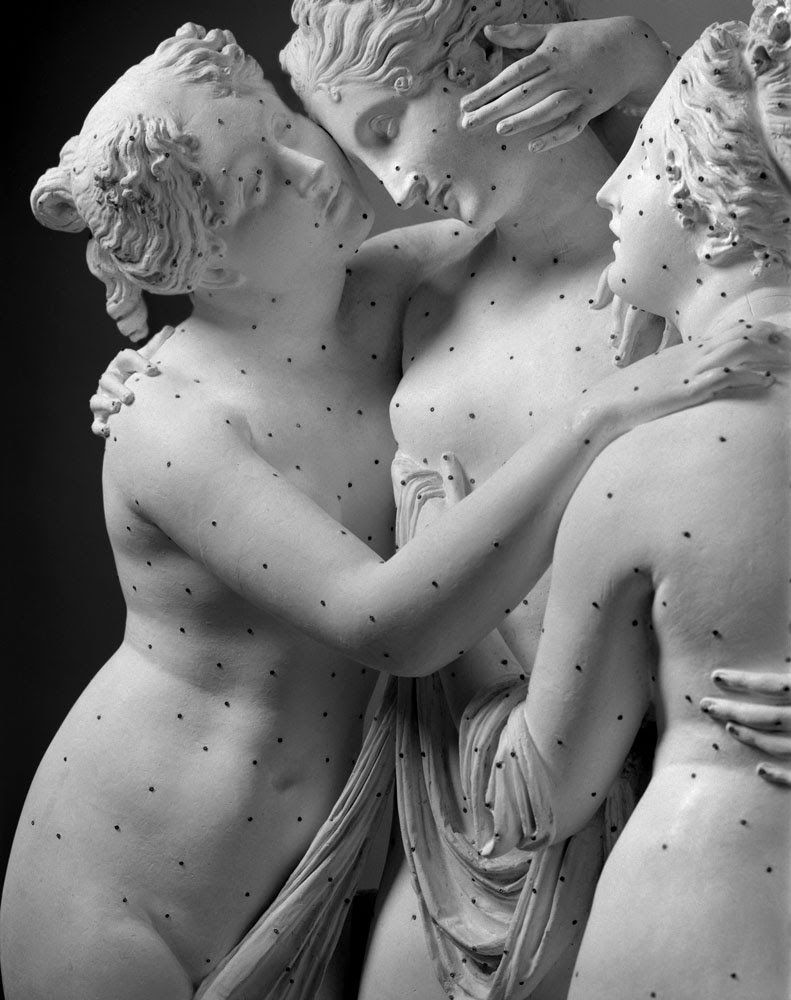Art Market#11: Antonio Canova
- Barbara Cortina
- Jan 31, 2023
- 3 min read
An important art market update comes this week for the sculptor Antonio Canova (1757-1822) and his Studio in Possagno (Treviso): Cupid and Psyche standing, a plaster cast conceived by Canova and executed between 1797 and 1803 under the artist’s control by his assistants (Vincenzo Malpieri and Giuseppe Torrenti), was sold on 26 January by the Auction House Bonino, in Rome, for the record price of €1,228,500, six times the initial estimate of €200-300,000.
The result is the fourth adjudication worldwide for a plaster by Canova and the first in Italy.
Here are the previous records:
Bust of Peace, Sotheby's London 2018, £5.3m
Bust of Joachim Murat, Christie's Paris 2017 €4.3m
Bust of Lucretia d'Este Hôtel des Ventes Monte-Carlo 2019, €2.8m
Venus and Adonis, Finarte Milan 1999, Lire 160m
The result is exceptional not only because Cupid and Psyche standing was the only plaster cast with that kind of subject still remaining in private hands (a second version is held at the Antonio Canova Museum in Possagno), but also in view of the fact that the work was coming on the market under a notification from the Ministry of Culture, which means the sculpture won’t be able to leave Italy.
A significant topic to Canova as it allowed him to fully develop the neoclassical idea of beauty derived from Winckelmann's ataraxia, i.e. an unruffled self-assurance in feelings, Cupid and Psyche standing was presented at auction in a good condition and well documented in terms of provenance, exhibitions and bibliography.
The original commissioner for Cupid and Psyche in marble, which was made in four versions between 1787 and 1803, now at the Louvre and at the Hermitage, was the English colonel John Campbell.
In Canova's Studio until the artist's death, in 1829 the plaster cast was inherited by his brother Giambattista Sartori, who later donated it to the noble Canal family. In the Canal family’s possession until 2004, the work was then purchased by the credit institute Veneto Banca, whose art collection is now in forced administrative liquidation for bankruptcy.
In terms of artwork’s execution, it shouldn’t surprise that the artist delegated it to his co-workers. In the artist's atelier, like in contemporary artist's studios, every phase of the production - from the original drawing to the clay sketch, from plaster to marble - was perfectly organised and divided between the artist and his workers - in a process aimed at assessing step by step the final rendering of the work before the final production in marble.
Canova himself never hid his aversion to working with plaster, preferring instead modelling the clay to develop an idea, to evaluate the proportions of a work or the incidence of light on it, participating again at the end of the process to give his last touch to the marble.
The plaster casts therefore had two different functions: to develop a subject and take the correct measurements, by affixing small bronze nails on the sculpture's surface, in order to transpose it then into marble, or, as it seems more likely in the case of Cupid and Psyche standing, to be displayed in the artist's Studio as a demonstration of the artist's genius, catching the attention of new collectors.

Cupid and Psyche standing. Courtesy Bonino

Cupid and Psyche standing. Courtesy Bonino

Cupid and Psyche standing. Courtesy Bonino

Cupid and Psyche standing. Courtesy Bonino
For those wishing to explore this aspect further, I would like to inform about the recent release in bookshops of the third volume of "Canova. Quattro Tempi", a project by photographer Luigi Spina focusing on Canova's plaster models now in the collection of the Antonio Canova Museum in Possagno, published by the Five Continents in Milan.

Courtesy Luigi Spina and Five Continents



Comments